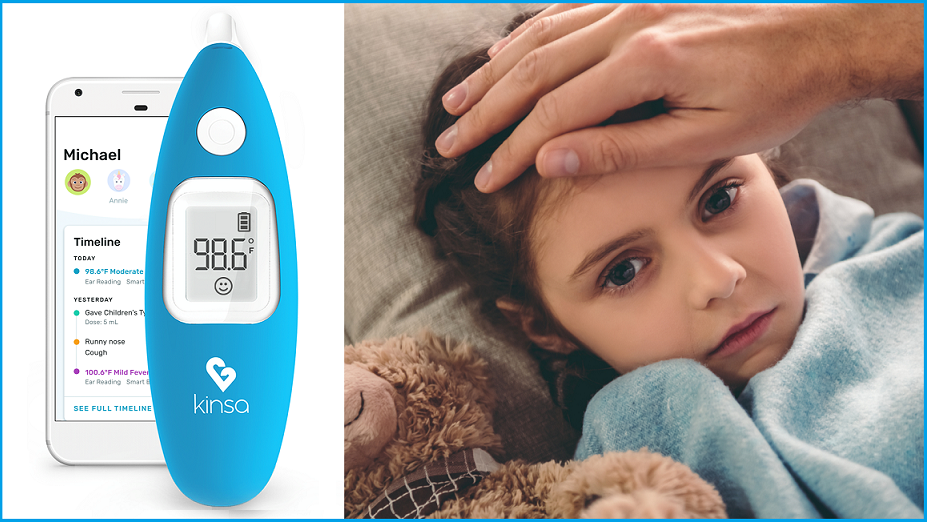As we adjust to a ‘COVID normal’ world and things like vaccination passports become a part of life, COVID-19 management through sensors and thermal imaging cameras used to detect the virus through temperature changes have been mooted.
Now smart thermometers are being touted as another tool for virus detection.
In the early days of the pandemic, internet-connected smart thermometers had success in predicting likely COVID-19 hot spots days or even weeks before case counts rose in the US. `
With testing and tracing outpacing the spread of the virus, particularly fast-spreading variants like Delta, other methods may be needed to help detect it in the atmosphere.
Kinsa is one such smart thermometer looking to expand its virus detection coverage.
It has 2.5 million connected thermometers providing real-time data about fevers around the US, which can show spikes of atypical fever that has shown to be linked to spread of the flu.
Its own data at the start of the pandemic showed a clear early warning the COVID-19 outbreak was blooming.
“An early warning system for spreading illness is essential infrastructure for the 21st century. We’ve all unfortunately experienced that all too clearly these past 18 months,” Inder Singh, founder and CEO, told Information Age.
The data is aggregated and anonymised and can also reveal declining levels of virus spread within a few days of measures such as social distancing rules coming into play.
A country map shows a risk score using the smart thermometer data and case data from the COVID-19 Data Repository from the US Center for Systems Science and Engineering (CSSE) at Johns Hopkins University.
"How do you stop an outbreak before it becomes an epidemic if you don’t know where symptoms are starting and how fast they are spreading?” said Singh,.
Applying ML to COVID-19 outbreak detection
The Kinsa system uses a proprietary smart thermometer linked to a mobile app that collects real-time syndromic monitoring data from a network of millions of households across the US.
The system analyses the data with machine learning that uses a standard logistic regression model.
This allows the results to be easily interpreted to show the probability an outbreak will occur, and the model has been trained to predict outbreak events 14 days in the future.
Technically, it defines outbreak events quantitatively.
It first flags any day where the rate of increase exceeded two cases per one million people.
Then it applies a smoothing function to identify outbreak events where at least five of the previous 15 days exceed the case growth thresholds and contiguous events are grouped together.
It then trains the model on the daily time series of these aggregated events.
If it detects something unusual, the system then communicates that out to users to get more information in real time.
“This allows us to immediately get more colour on the outbreak,” said Singh.
In April this year, Kinsa saw a level of fever higher than it would expect for the time of year.
“We were able to determine that nearly 25% of those fevers were in fact due to the vaccine (that is, someone being vaccinated within the last 48 hours), rather than due to an illness.”
Smart thermometers for Australia?
The company has calculated that for the US, some 5.4 million thermometers would be needed to provide granular national coverage for COVID-19 in the US.
In a country the size of Australia, it estimates 50,000 thermometers would achieve the level of coverage that would be needed to pick up “anomalous” or unusual illness events (those outside of normal colds and flu).
“With this level of thermometer use in Australia, we would be able to see geospatial anomalies on symptom incidence, transmission and symptom severity/progression,” said Singh.
From this data, Kinsa could then understand if something doesn’t look like normal cold and flu, such as if it is transmitting faster or the symptoms are more severe,” Singh said.
As a medical devices, Kinsa’s thermometers would need regulatory approval from the Therapeutic Goods Administration, but there are no other technical restrictions or requirements.
It hopes to move to Canada soon and onto Australia in the next couple of years.
It may be some way off from adoption in Australia, but points the way to the many smart tools that could be deployed to reopen a COVID normal world.










